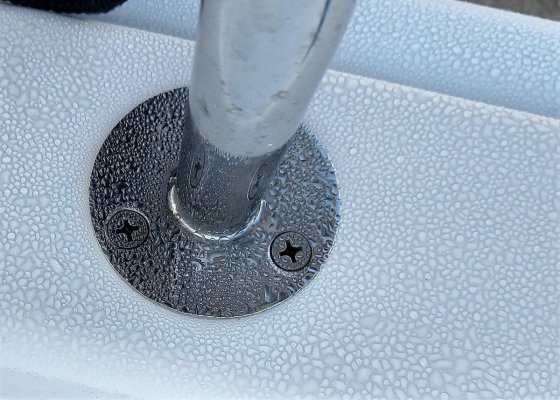Caterpillar 3116/3126 Soft French Block Issues
Hello all,,,,
So as I am doing my research, I have seen a few listing where it is mentioned that "this Mainship 390 has the preferred Caterpillar 3126 Diesel"
Should I set that as a "got to have" on my list?
Jeff
I think this is mostly a creative seller's 'marketing hook', and it's B.S. If anything, this probably stems from all of the trouble Mainship had with the infamous Caterpillar "soft block" issues that --began-- with the 3116, and the mistaken notion that this was somehow 'fixed' with the 3126. It was not. While SOME 3126 engines were built with the newer blocks, most were not.
Background: At the beginning, most (if not all) of the Mainship 350/390
singles had Cat 3116 (and later, 3126) engines. The story Jim Krueger of Mainship told me was that there were a large number of 3116/3126 engine blocks manufactured in France that were incorrectly alloyed and hence the cast iron was 'soft', which was a particularly big problem in marine applications due to the usage profile being very different from that of a truck or construction vehicle. These engines were 'failing reliably' within the first couple thousand hours.
After a long fight, finally Caterpillar approved a 'silent' warranty campaign where these blocks could be replaced by Caterpillar. In the end, the Caterpillar 3116/3126 engines gained a well deserved reputation for early-life failures. An unknown number of these engine block were replaced, leaving an unknown number of them still out there.
If you go to David Pascoe's website, you will find that this was a well-known issue by 1999. After 2002, the 'Caterpillar Problem' had gotten so bad that AFAIK, there were no more 390s getting Caterpillar engines and the only choices were Yanmar or Cummins. I myself have never heard of a 2002 or newer model that was delivered with a Caterpillar.
Also, if you want more details go here:
https://boatdiesel.com/Forums/Powertrain/Caterpillar-3126-Series/ForumSearch/soft-block.cfm
Over the last many years since I looked into this issue and spoke with Krueger directly, I have heard many Caterpillar afficionados claim that "all of these blocks were eventually replaced under warranty". I know this is not true because when I looked at six different MS390s in 2012-2013, I found two "low hours" boats with Cats that had the french-block engine stamping designation.
Bottom line, unless a seller can PROVE that a Cat 3116/3126 does NOT have a French block, then you should steer clear.
In my experience, the only 'preferred' engines for MS350/390 single-engine models have been the Yanmars and the Cummins. If you can find a broker who will pull a "sold boats" report from Yachtworld, you will find (as I did) that there is generally a 15-20% price 'break' for MS390s with Caterpillar engines versus the 'preferred' Yanmar and Cummins examples.
That doesn't mean you should automatically walk away from a Cat 3126, but you should expect to pay less and you need to be very careful doing your research to make sure you are not getting a soft French block.
The biggest problem (for me) was that Caterpillar never PUBLICLY acknowledged the problem. This leaves buyers in the used market not really knowing whether the boat they are buying is a 'lemon' or not.
So, any Mainship 350/390 with any Cat 3116/3126 is definitely a BUYER BEWARE situation.
You will learn much more on this topic if you do a google search on 'caterpillar 3126 french block soft'.




